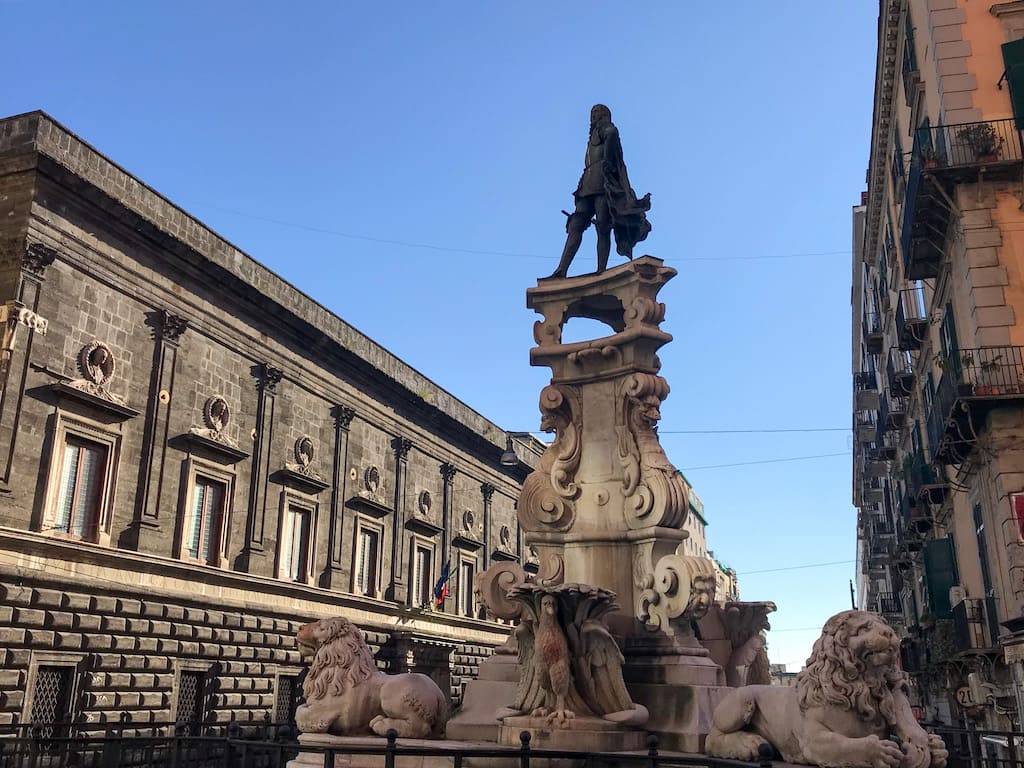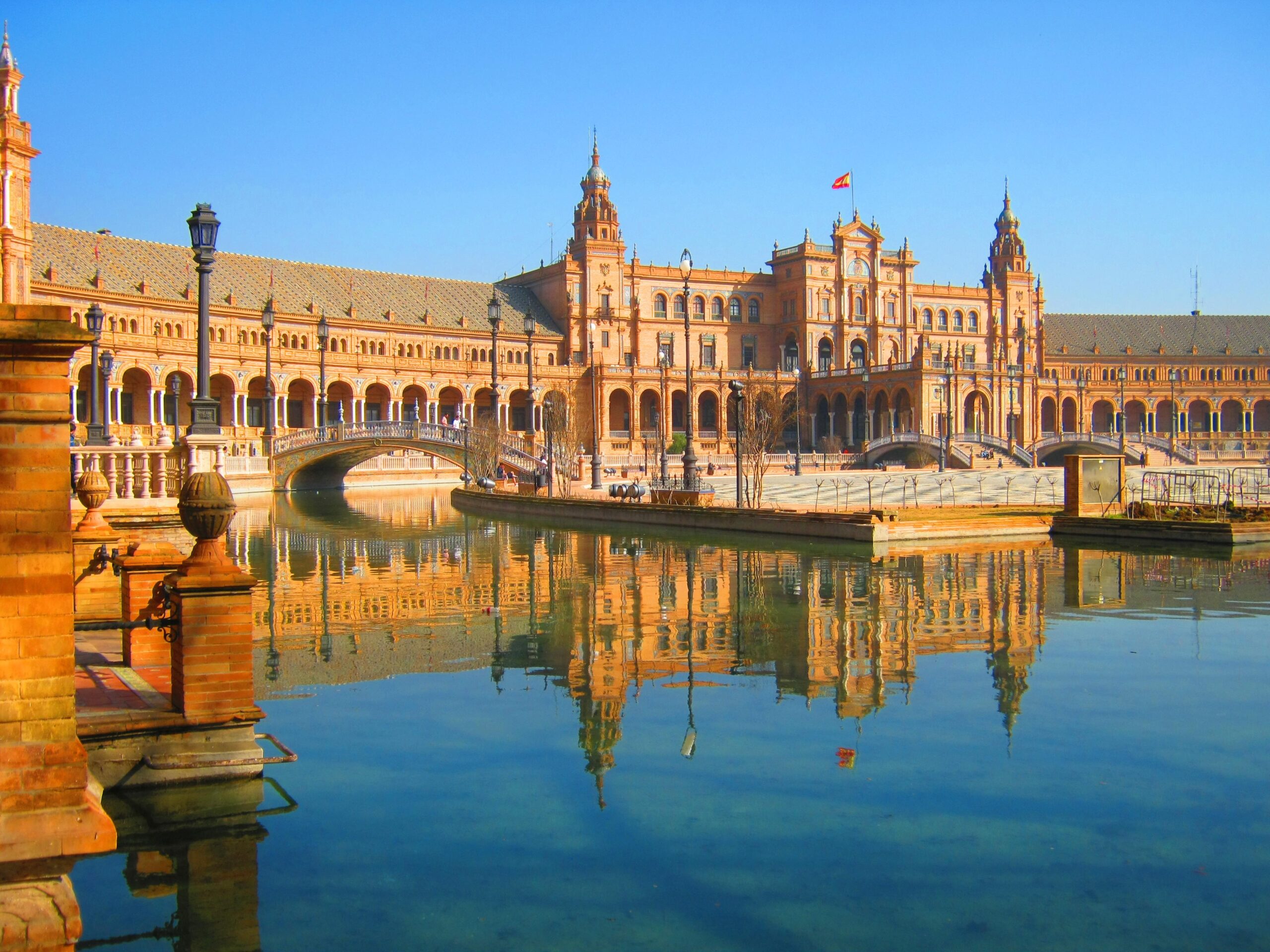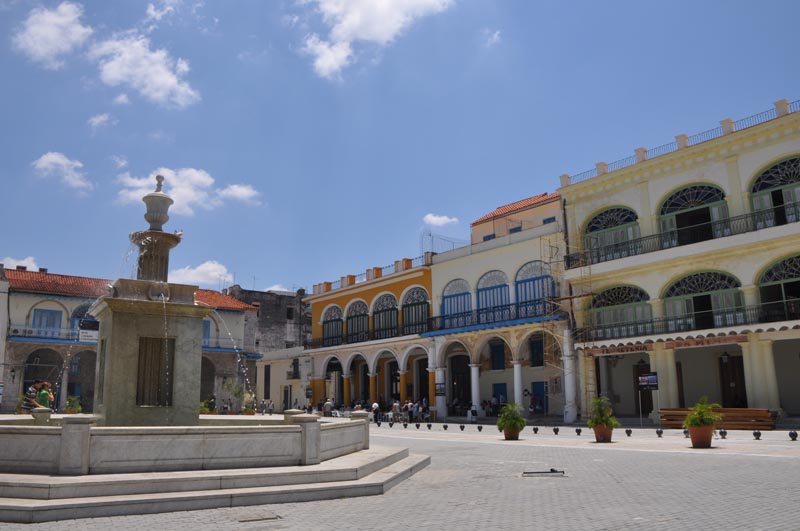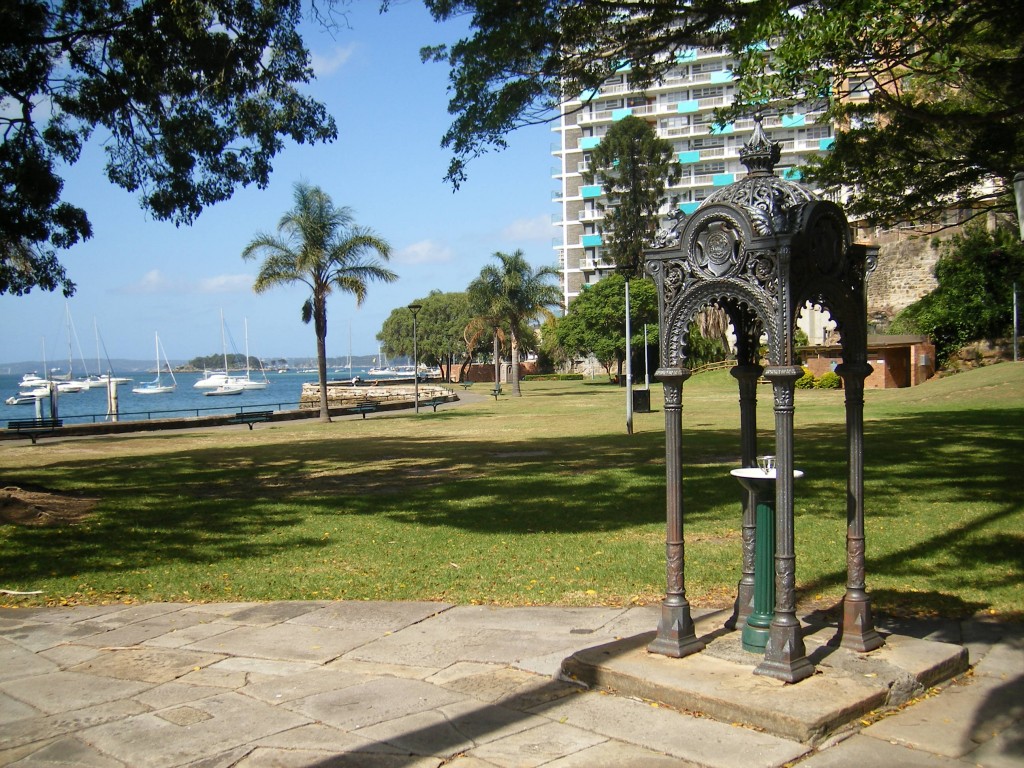The Fountain of Charles II (king of Spain when he was only 4 years old), better known among Neapolitans as the Fountain of Monteoliveto, is one of the rare historical fountains of Naples still standing in the place where they were built. A 17th century baroque monument built at the behest of Viceroy Don Pietro Antonio of Aragon and financed by the city and the inhabitants of the area. Among these there was the Duke of Gravina, owner of the homonymous palace located just in front of the fountain; today it is the seat of the Faculty of Architecture of the Federico II University.
The work began in 1669 and lasted for several years, due to countless disputes on the final design. The most important marble workers and bronze craftsmen of the Kingdom took part in its construction: Mori, Santabarbaro, Lazzari and Mazzetti for the marble; the bronze statue of the king was made by Francesco D’Angelo on a design by Fanzago.At the base there is a three-armed poly-lobed basin, with a plinth in the middle that is also shaped; on this second stage there are three eagles, placed on shell-shaped basins, and three lions that hold between their forelegs the coats of arms of the city, of the king and of the viceroy.
In the centre stands a pyramidal obelisk on which rests the bronze statue of Charles II of Spain. A popular legend tells that the gaze of the boy king is turned towards a place where a fabulous treasure is buried.













